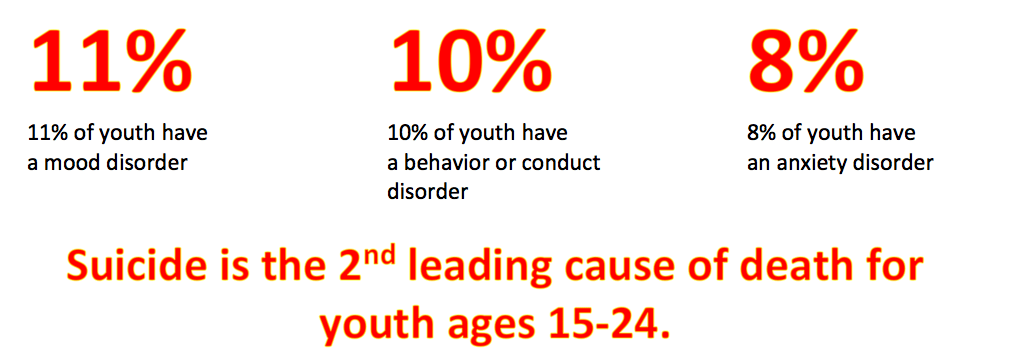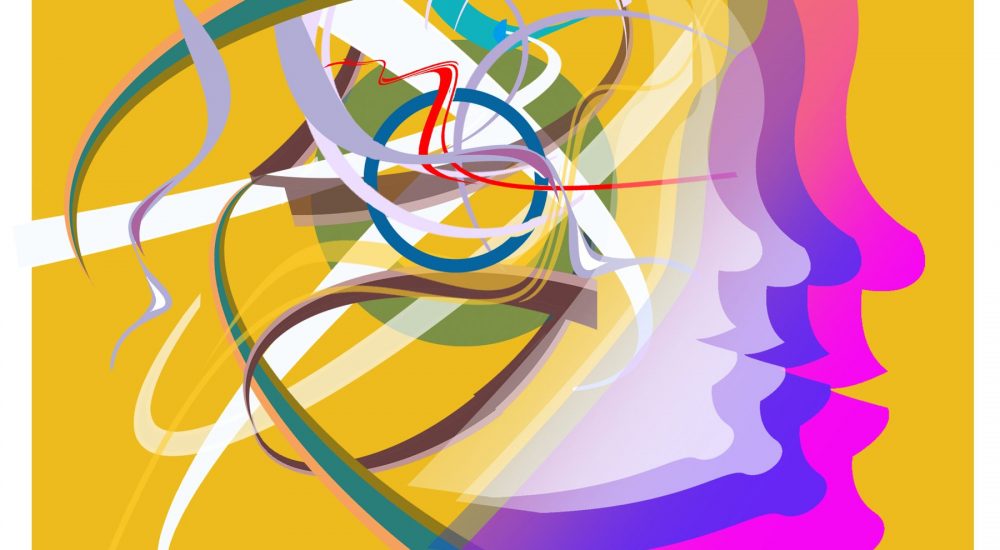Have you ever looked into a child’s eyes and been able to see their pain?
As people who work with youth, we want to do everything we can to help that child and make that pain go away. But what is that pain? How can we help?
Emotional pain is typical for children and youth as they develop and mature. These various types of emotional pain can range from anxiety about a big test at school to sadness because of the passing of a beloved pet. These emotional struggles are in line with typical adolescent development and maturity so they tend to be short lived and transient in nature. However, when the pain persists, it may be time to seek professional help.
While most kids and teens are physically and emotionally healthy, one in every five youth ages 13-18 have, or will have a serious mental illness according to the National Alliance on Mental Illness (NAMI). So what does mental illness in children and teens look like?

May is the perfect month for us to be thinking about the mental health of children and teens as May is Mental Health Awareness Month. Since 1949, Mental Health Awareness Month has been reaching millions of people through local events and media to help breakdown the stigma of mental health, provide training and education opportunities, as well as, connecting those in need of mental health services to appropriate help.
Do you feel confident in yourself to be able to identify the warning signs of depression, suicide, or the onset of other mental illnesses? As youth workers and educators, we are required to take on a number of different rolls while working with youth, I would strongly encourage you to seek out training opportunities in your area to learn more about youth mental health.
But in the meantime, here are some standard warning signs for children and teens provided by NAMI:
- Feeling sad or withdrawn for more than 2 weeks.
- Severe mood swings that cause problems with relationships.
- Out-of-control, risk-taking behaviors that can cause harm to self or others.
- Drastic changes in behavior, personality or sleeping habits.
- Sudden overwhelming fear for no reason, sometimes with a racing heart, physical discomfort or fast breathing.
- Extreme difficulty in concentration or staying still that can lead to failure in schools.
- Not eating, throwing up or using laxatives to lose weight; significant weight loss or gain.
- Intense worries or fears that get in the way of daily activities like hanging out with friends or going to classes.
- Trying to harm or kill oneself or making plans to do so.
- Repeated use of drugs or alcohol.
Being aware of the warning signs above is a tremendous help, I challenge you to go a step further and complete some kind of mental health or suicide training as you might be the one to help save the life of a child.
Here are my recommendations:
- Youth Mental Health First Aid – is designed for anyone in contact with adolescents (age 12-18) who are experiencing a mental health or addictions challenge or is in crisis. The course introduces common mental health challenges for youth, reviews typical adolescent development, and teaches a 5-step action plan for how to help young people in both crisis and non-crisis situations. Topics covered include anxiety, depression, substance use, disorders in which psychosis may occur, disruptive behavior disorders (including AD/HD), and eating disorders.
- safeTALK – is a half-day alertness training that prepares anyone over the age of 15, regardless of prior experience or training, to become a suicide-alert helper.
- QPR – Question. Persuade. Refer. is on a mission to reduce suicidal behaviors and save lives by providing innovative, practical and proven suicide prevention training. The signs of crisis are all around us, so QPR trains you to make a positive difference in the life of someone you know.
For breakfast this morning I enjoyed an apple, egg and cheese wrap, and my daily cup of coffee!
Author Profile: @ericevans
